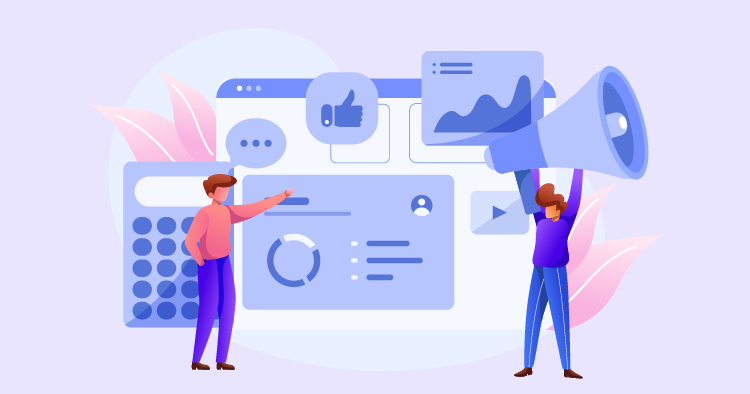Combining web design and digital marketing is like putting together a puzzle; each piece must fit perfectly to complete the picture. A website that looks great and is easy to use lays the groundwork for any online marketing plan. It grabs people’s attention and keeps them around, which can lead to more sales or sign-ups. Your marketing efforts are like a map that guides people to your website. Once they arrive, your website’s design has to be convincing enough to turn those visitors into paying customers. For any business that wants to shine online, it’s crucial to understand how web design and digital marketing work together. This article will dive into how merging web design with digital marketing can boost your brand’s visibility online and offer tips on crafting a strategy that works hand in hand to enhance your brand.
Understanding the Basics of Web Design
Your website’s design is like the digital front door to your business. It creates the first and often lasting impression. A site that’s both easy to use and visually appealing sets the stage for a positive experience with your brand.
Responsive Design for Mobile Optimization: A mobile-friendly website is essential for many people browsing smartphones and tablets. It ensures your site looks great and functions well on all devices.
Precise Navigation and Intuitive User Experience: Your website should guide visitors smoothly through their journey. Straightforward navigation and an intuitive layout make it easy for users to find what they want, enhancing their experience.
Consistent Branding and Visual Identity: A solid visual identity reinforces your brand and makes your website stand out. Consistency in design elements like colors, fonts, and imagery helps build brand recognition.
Harnessing the Power of Digital Marketing
Digital marketing is about connecting with your audience online. It encompasses a variety of tactics and channels that help you reach customers wherever they are in the digital landscape. Digital marketing is an indispensable tool for engaging your audience and expanding your reach.
Various Digital Marketing Channels and Strategies
Search Engine Optimization (SEO): This strategy involves optimizing your site to rank higher in search engine results. It increases your website’s visibility and drives organic traffic.
Select one of over 500 designs and establish your online presence.
- Free Web Hosting
- Fully Managed Solutions
- Scalable Websites
- No Hidden Cost
Social Media Marketing: Platforms like Facebook, Instagram, and Twitter offer great opportunities to interact with customers and build your brand’s online community.
Email Marketing: This involves connecting with your audience through personalized email communications. It’s a direct and effective way to engage with customers.
Pay-Per-Click (PPC) Advertising: This paid advertising strategy helps you reach a larger audience quickly. It’s a great way to boost visibility and draw traffic to your site.
Integrating Web Design and Digital Marketing
When your website design and digital marketing goals are in sync, you’re setting the stage for better results. A website that’s been fine-tuned for your marketing objectives is far more likely to draw in the right crowd, keep them interested, and encourage them to take action, whether buying something or signing up for more information.
How Web Design Elements Can Enhance Digital Marketing Efforts
– Optimizing Website for SEO: A website that looks great and has SEO-friendly content is more likely to appear in search results, bringing more visitors to your site.
– Incorporating Strong Call-To-Action (CTA) Buttons: CTAs are the signposts that tell visitors what to do next, like buying a product or signing up for a newsletter. They need to be clear and persuasive to work well.
– Integrating Social Media Sharing Buttons: Your brand gets more exposure when people can easily share your content on social media. It’s like giving your visitors the tools to help spread the word about your website.
Creating a User-Centric Website
To create a website that speaks to your audience, you need to know who they are, what they like, and what problems they’re trying to solve. This means researching their habits, preferences, and frustrations.
Select one of over 500 designs and establish your online presence.
- Free Web Hosting
- Fully Managed Solutions
- Scalable Websites
- No Hidden Cost
Research and testing how easy your website is to use are essential steps. They help you find any parts of your website that might confuse or frustrate people and give you insights into improving it for everyone who visits it.
Designing with the user in mind means making a website a pleasure. It should be easy to navigate, accessible to everyone, and filled with practical and valuable content for your visitors.
Building a Strong Online Presence
When your brand looks and feels the same everywhere online—from your website to your social media pages—it helps people remember and trust it. Consistency in your logos, colors, and message is critical.
Creating great content is a powerful way to draw people to your website and keep them there. You can become a go-to resource in your industry by sharing your expertise and offering valuable information.
Social media is a fantastic way to get your brand seen by more people. You can increase your brand’s online presence by posting engaging content, chatting with your followers, and using targeted ads.
Maximizing Conversion Rates through Effective Design
Your landing pages are crucial for turning visitors into customers or leads. They should be straightforward, easy to understand, and convincing, with a strong CTA that clarifies what visitors should do next.
The words on your website need to grab visitors’ attention and persuade them to take action. Your writing should be clear, engaging, and reflect your brand’s unique voice.
People are more likely to trust your brand if they see positive reviews, testimonials, and other signs of a reputable business. These trust signals can significantly affect whether someone buys from you.
Tracking and Analyzing Website Performance
Tools that analyze your website’s data are critical for understanding its performance. They can tell you how many people are visiting, what they’re doing on your site, and whether they’re taking the steps you want them to take.
How people use your site and where they might get stuck can help you improve. Understanding these patterns is vital for tweaking your website to better lead visitors to make a purchase or sign up.
The best way to keep improving your website is to use the information you gather to decide. When you regularly check the data and make changes based on what you find, you can keep improving the experience for your visitors and potentially increase your conversion rates.
The Importance of Mobile Optimization
With more people using mobile devices to browse the internet, websites must be mobile-friendly. A website that looks good and works well on a smartphone or tablet can keep visitors happy and help a site rank better in search engine results.
Responsive design is about ensuring a website looks great and functions well on any device, regardless of screen size. This approach is essential because it ensures everyone has a positive experience when visiting your site, regardless of their device.
Since so many people are on their phones, marketing efforts should also focus on mobile users. This means creating emails that read well on small screens and ads specifically targeted to mobile users, helping businesses connect with their audience where they are most active.
Enhancing User Experience through Visual Storytelling
Visual storytelling can be a powerful way to share what your brand is all about. Using pictures, videos, and graphics, you can tell your brand’s story in a way that captures attention and makes a memorable impact on your audience.
Using videos, images, and infographics can make your website more engaging. They help break up text, make complex ideas easier to understand, and add an element of interest that keeps users on your site longer.
Your website’s design should reflect your brand story at every turn. The colors, images, and overall look and feel should all add up to a clear picture of who you are as a brand, helping you connect with your audience on a deeper level.
Effective Lead Generation Strategies
To turn website visitors into leads, you need suitable lead capture forms. These forms should grab attention and be user-friendly, making visitors more likely to fill them out.
By offering something valuable like ebooks, webinars, or coupons, you can encourage people to give you their contact information. This step is essential for growing your email list and keeping potential customers interested in what you offer.
After you’ve collected some leads, keeping the conversation going with email marketing is essential. This means sending them exciting content and special offers that keep them engaged and guide them closer to purchasing.
Integrating Social Media into Web Design
By adding social media to your website, you can increase the number of users interacting with your content and spreading the word about your brand. You can do this by including links to your social media pages, live social media feeds, and share buttons.
Showing your social media feed on your website can make your content feel more current and encourage visitors to connect with you on social media. Share buttons make it simple for visitors to post your content to their social media profiles, which can help increase your reach.
When customers share their own stories and reviews about your brand, it can be compelling to others. Featuring this kind of user-generated content on your site can help build trust and encourage others to try your products or services.
Optimizing Website Speed and Performance
A website’s speed is crucial in keeping visitors happy and improving its visibility on search engines. If your site loads quickly, visitors are likelier to stick around, and search engines like Google may rank your site higher, making it easier for people to find you.
There are several ways to make your website load faster. You can start by making your images smaller without sacrificing quality, using caching to help browsers load pages faster, cleaning up your code to eliminate unnecessary elements, and choosing a web hosting service known for its speed. These steps can make a noticeable difference in how fast your site loads, keeping visitors on your page longer.
Keeping your website in top shape requires regular check-ups and tweaks. This means running the latest software, fixing links that no longer work, and monitoring your site’s speed. By staying on top of these tasks, you can help ensure that your website remains quick and responsive for your visitors.
Balancing Aesthetics and Functionality
Creating a website that looks great and works well is essential. You want to draw people in with a beautiful design, but it’s just as important that they can navigate your site easily and find what they’re looking for. This balance is key because it helps to keep users engaged and can lead to more people taking the actions you want them to take on your site, like buying something or signing up for a newsletter.
When designing a website, consider how each choice you make affects the user’s experience. The colors, layout, and fonts you choose should make the site easy and enjoyable. It’s essential to ensure users can get around the site without getting lost and that any tasks they want to do are simple. The look of your site is critical for your brand and for connecting with your audience on an emotional level.
Once your website is live, the work isn’t over. You must keep testing and improving your design based on what your users tell you. You can use A/B testing, surveys, and usability tests to see how real people use your site and what they think about it. This ongoing improvement helps ensure your website stays attractive and easy to use.
Final Thoughts
Merging web design with digital marketing is critical for businesses in the digital space. Companies in the digital space need to design a website that catches the eye and aims to turn visitors into customers. Your digital marketing should be like a beacon, drawing the right people to your website. You’re more likely to see actual results when you get this combination right. By embracing the partnership between web design and digital marketing, you can create a strong and memorable online brand that stands out.



